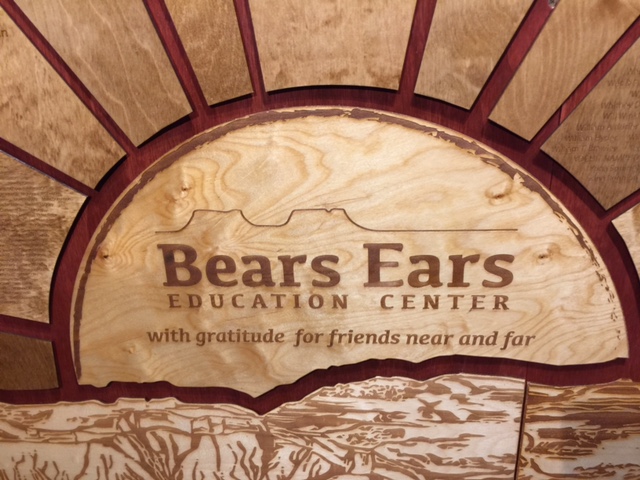Americas
Preservation Close to Home
 I am responsible for managing the international giving of Grand Circle Foundation and recently had the honor to represent the Lewis Family Foundation at the grand opening of the Bears Ears Education Center in Bluff, Utah.
I am responsible for managing the international giving of Grand Circle Foundation and recently had the honor to represent the Lewis Family Foundation at the grand opening of the Bears Ears Education Center in Bluff, Utah.
Bears Ears National Monument is the ancestral home of five Native American tribes—Hopi Nation, Navajo Nation, Ute Mountain Ute Tribe, Ute Indian Tribe of the Uintah Ouray, and Zuni Tribe. It’s also home to thousands of archaeological and paleontological sites with nothing in place to protect them from being destroyed unintentionally by hikers, campers, and tourists.
The Bears Ears Education Center was created to provide friendly visitor guidance and education on the importance of respecting and protecting the landscape. Funding was a grass-root, community-led initiative with donations from more than 3000 people, including the Lewis Family Foundation.
I’ve lived my entire life in a suburb of Boston. Bluff, Utah has a population of less than 500 people and is 75 miles to the nearest grocery store—my visit was eye-opening in many ways. Although I thought I understood the importance of protecting this landscape prior to my visit, the opportunity to spend time exploring these wide open spaces heightened my awareness.
I stood in awe in the middle of the Valley of the Gods where there was not another person or car in sight, and then continued on to the Moki Dugway, a dirt switchback road carved into the cliff edge of the Cedar Mesa. I hiked to 1600-year-old Pueblo ruins and passed dinosaur tracks and petroglyphs along the way. I marveled at the canyon carved by the San Juan River, 1000 feet below the overlook at Goosenecks State Park. These geologic formations and sandstone bridges were natural wonders that humbled me and helped me understand the passion people have for this landscape.
The staff and board of directors of the education center include educators, archaeologists, paleontologists, Native Americans, and locals who have walked the land for decades. The group planned an event-packed weekend for the grand opening, which was attended by people who support the center from near and far.
Ceremonies began with a blessing by a Navajo chief, and a “ribbon” cutting of cordage (rope fiber made from local plants) with a replica pueblo stone knife. The day’s events included pottery demonstrations, atlatl throwing (a Native American spear), a lesson on how to make cordage, and a lecture on paleontology and archaeology. At night, the display cases were moved aside and the space became a dance floor with music provided by a Native American band.